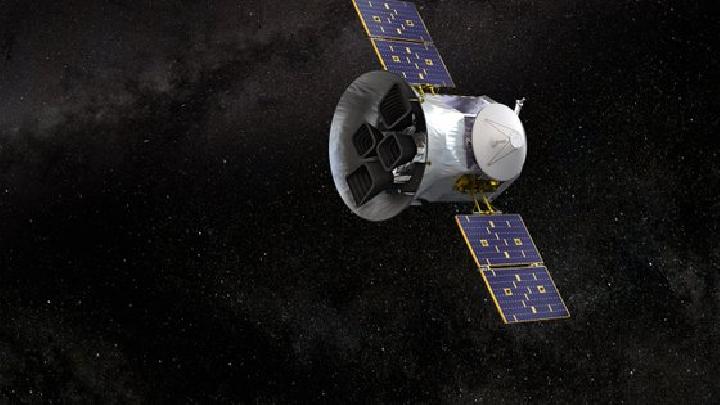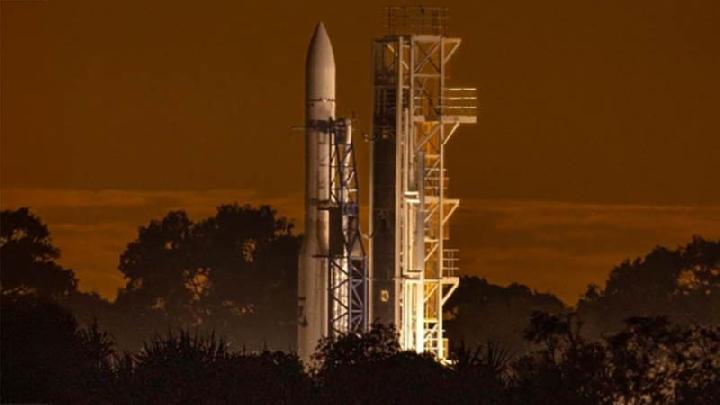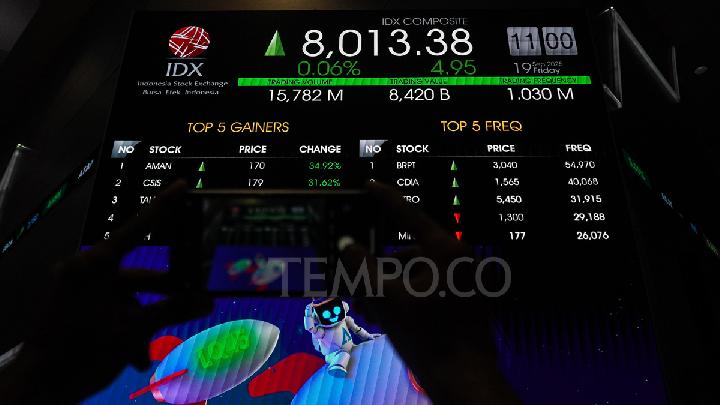
TEMPO.CO, Jakarta - A NASA satellite that has been "lifeless" for nearly six decades suddenly emitted a strong radio signal in June 2024. Researchers say the signal originates from Relay 2, a communication satellite launched in 1964 and ceased functioning in 1967.
In a preprint study uploaded to the arXiv online repository of scientific articles on June 13, 2025, astronomers explained the mysterious radio wave burst when scanning the sky using the Australian Square Kilometer Array Pathfinder (ASKAP) radio telescope in Western Australia.
"This was an incredibly powerful radio pulse that vastly outshone everything else in the sky for a very short amount of time," said Clancy James, the lead author of the study and an associate professor at the Institute of Radio Astronomy, Curtin University, cited from Live Science report on June 25.
The detected signal only lasted for 30 nanoseconds and did not match any internal systems of the Relay 2 satellite. This rules out the possibility that the signal was an intentional transmission. Researchers suspect two possible causes for the appearance of the signal: micrometeorite impact or electrostatic discharge (ESD).
The study explained that A micrometeorite impact could produce a plasma cloud, which would enhance the conductivity of the space environment or create an electric field on the satellite's surface. "Micrometeoroid impacts can also produce direct radio-frequency emission," wrote the researchers.
However, according to the team, the more likely cause is an ESD event, a sudden flow of electricity between two different surfaces or materials on a satellite with different electric charges. As an early-generation space vehicle, Relay 2 is likely made of materials capable of withstanding larger charges and producing stronger ESD events.
"It has long been known that ESD causes radio frequency pulses," as stated in the researchers' conclusion.
The ASKAP system, which usually detects radio bursts from distant galaxies, found that this signal originates from within the Milky Way galaxy, even very close to Earth. The telescope couldn't accurately pinpoint its signal. James thought they had found a new pulsar or other mysterious object.
After investigation, the only plausible source was the Relay 2 satellite. However, the researchers stated that it is difficult to confirm the source of the signal, whether from a micrometeorite or ESD, due to their similar characteristics.
Karen Aplin, a space science and technology professor at the University of Bristol who was not involved in the research, stated that the signal produced by both events would appear very similar. Nevertheless, she suggested that this study could mark the beginning of a new approach to observing electric discharges in space.
"In a world where there is a lot of space debris and there are more small, low-cost satellites with limited protection from electrostatic discharges, this radio detection may ultimately offer a new technique to evaluate electrostatic discharges in space," said Aplin.
Editor's Choice: 15 Countries with the World's Fastest Internet in 2025
Click here to get the latest news updates from Tempo on Google News
Australia's First Orbital Rocket Launch Delayed Again
3 hari lalu

The inaugural launch will be the first test of the plan for several launches as part of the rocket system certification process.
Netflix Partners with NASA to Show Space Exploration
5 hari lalu

Named NASA+, the live space exploration program will be available on the main page of Netflix soon.
NASA's James Webb Telescope Unveils Largest-Ever Map of the Universe
25 hari lalu

A team of scientists spent two years processing data and creating a map of the universe using Nasa's James Webb telescope.
Axiom 4 Space Mission Launches with 60 Scientific Studies from 31 Countries
33 hari lalu

Four astronauts will launch with the Dragon capsule powered by SpaceX Falcon 9 rocket from the Kennedy Space Center, NASA, on June 10 EDT.
Arctic Warming Disrupts Ocean Currents, Could Trigger Major Floods in the US
34 hari lalu

The Arctic is now warming faster than most other regions in the world, potentially disrupting the key current that distributes global heat.
Trump Cancels Plan to Appoint Elon Musk's Friend as NASA Chief
35 hari lalu

It is still unclear what reasons led to Trump's change of heart. Is it because of a strained relationship with Elon Musk?
Latest NASA Study Finds Venus Likely Still Geologically Active After Decades
41 hari lalu

The surface of Venus is still being shaped by activities from within the planet, more than 30 years after NASA's Magellan spacecraft mapped its surface.
China to Deploy 2,800 AI-Driven Supercomputing Satellites in Orbit
47 hari lalu

China has launched the first 12 satellites for a space-based AI supercomputer network development project
Trump Cuts NASA Budget, US House Worries About Asteroid Strike
49 hari lalu

The US House Committee on Space, Science, and Technology has expressed concerns over President Donald Trump's plan to cut the budget for the National Aeronautics and Space Administration (NASA) by up to 24 percent.
Old Soviet Spacecraft Kosmos 482 Could Fall in Four Indonesian Areas Today, Says BRIN
58 hari lalu

BRIN Space Research Center has reported that the spacecraft Kosmos 482 is expected to fall to Earth on Saturday afternoon, May 10, 2025.


















































